Michael Jackson
Classic MJ Reigns Supreme: High School Tribute Outperforms Controversial Hologram
Published
10 years agoon
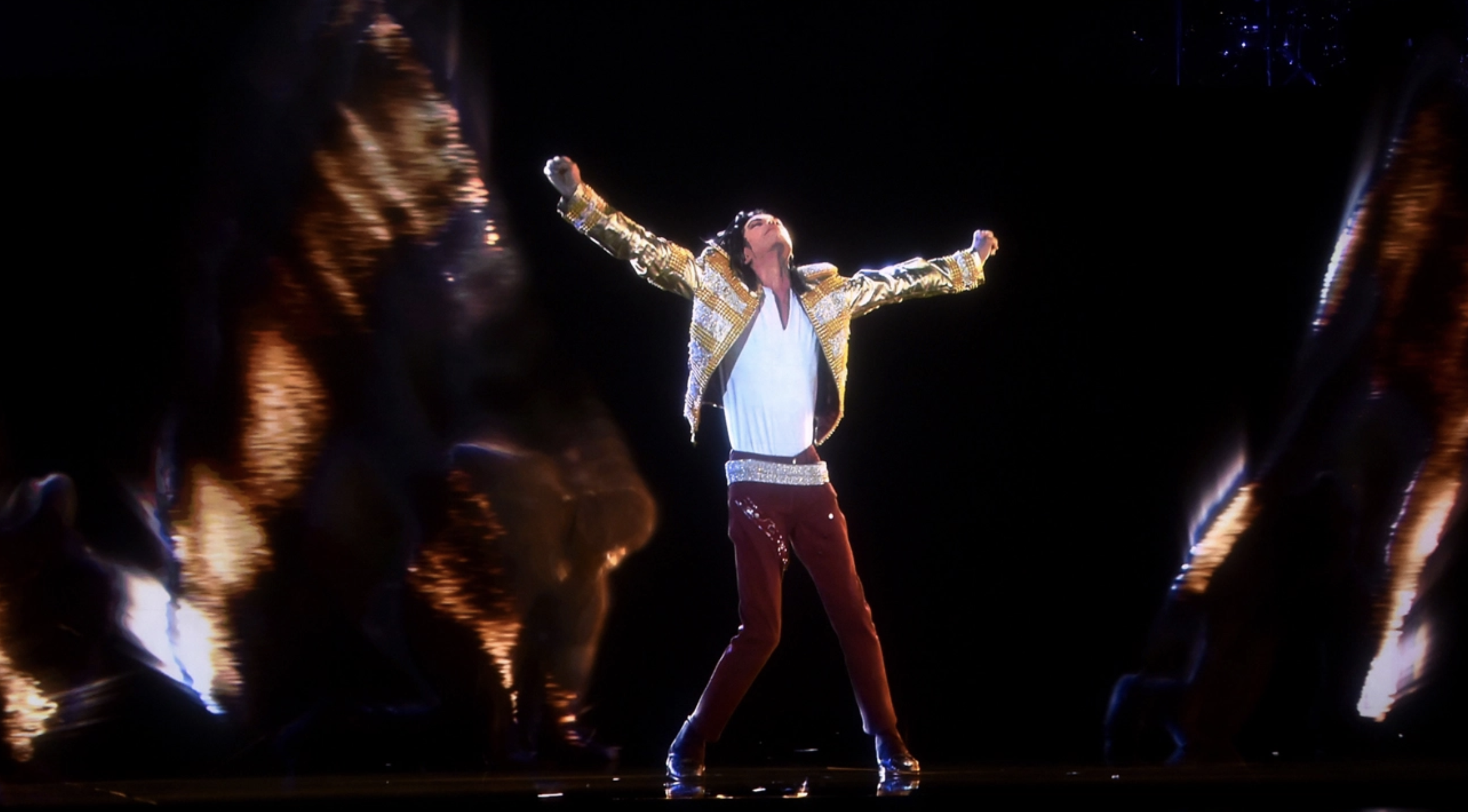
Portions of this week’s Billboard charts have been revealed by the publication today, including some interesting data regarding what type of Michael Jackson content the public wants to see.
The official U.S. chart-week kicked off with an Estate-funded ‘hologram’ performance choreographed to Timbaland’s remix of “Slave to the Rhythm,” which is featured on Sony Music and the Michael Jackson Estate’s newly-released Xscape album.
The hologram was constructed from secretly filmed multi-angle HD footage of Michael Jackson impersonator Earnest Valentino – attempting to execute Jackson’s signature movements and gestures.
The only problem was that to hardcore MJ fans, the hologram looked, moved and felt nothing like the pop star they adore.
The performance was staged at the 2014 Billboard Music Awards, and was later uploaded to the official Michael Jackson YouTube account.
“Our other goal is to use new and innovative ways to create entertainment on a grand scale that allows the world to experience Michael’s magic,” said the Estate in one of four statements issued to fans this past week.
“After all, [this] is what we all want – for the rest of the world to see and love Michael the way that we all do. The efforts of the last few weeks, and especially, the performance on the Billboard Awards is working… The illusion has put Michael back in the forefront of the entertainment world and helped promote Xscape… No one will ever replace Michael Jackson, the King of Pop. And certainly no one can dance like the greatest entertainer who ever lived – not even an illusion.”
As a result of the hologram performance, “Slave the the Rhythm” debuted at #45 on the Billboard Hot 100, with 75% of its sales credited to 3.9 million streams in the U.S. – 2.2 million of which came from views of the hologram on YouTube.
This marks the 50th time a Michael Jackson song has charted on the Hot 100.
However, something far more impressive also happened this week – both in the world of both Michael Jackson and on the Billboard charts.
Michael Jackson’s #1 hit “Billie Jean,” originally released as a single in 1983, has re-entered the Billboard Hot 100 at the astonishing position of #14.
During a talent show in Turlock, California, seventeen-year-old Pitman High student Brett Nichols dazzled classmates with an impressive dance tribute to Jackson’s Motown 25 “Billie Jean” performance.
A video of Nichols’ performance was uploaded to YouTube, and went completely viral online.
The video has been downloaded and re-uploaded dozens of times, was featured on the YouTube homepage, and some of the world’s biggest online publications have tweeted about.
All of this attention resulted in tens of millions of views around the globe.
The video, which features the original audio from Jackson’s 1982 Thriller album, was viewed so many times that it out-ranked Sony’s recently-released Michael Jackson single “Love Never Felt So Good” featuring Justin Timberlake on this week’s Billboard Hot 100 singles chart.
According to Nielsen BDS, the “Billie Jean” tribute performance amassed 11.2 million eligible streams in the United States alone.
Both the ‘hologram’ performance and the “Billie Jean” tribute were the work of Michael Jackson impersonators – the hologram by Earnest Valentino and “Billie Jean” by Brett Nichols.
However, one was misleadingly advertised as being a performance by ‘Michael Jackson like you’ve never seen him’, while the other featured a teenager who certainly wasn’t trying to trick his audience into believing he was Michael Jackson.
In one of their statements in defence of the hologram, the Estate of Michael Jackson said:
“The best entertainment is that which evokes ‘suspended disbelief’; it’s about entertainment, not reality. When David Copperfield makes an airplane disappear, the illusion is no less compelling because it is not real.”
But I disagree.
For me, the excitement, wonder and brilliance of Michael Jackson was all about the reality of it.
The reality that a human being could perform real-life, gravity-defying magic as he floated across the stage under a single spotlight – all on his own – physically embodying the music while mesmerising his audience.
That, in my opinion, is the best kind of entertainment. That’s real. That’s authentic.
That’s Michael Jackson.
Huffington Post journalist Charles Thomson hit the nail on the head with his commentary of the issue.
“The suggestion that Michael Jackson would somehow become ‘irrelevant’ or ‘forgotten’ if the Estate didn’t screen holograms of impersonators on awards shows has no basis in reality,” said Thomson.
“There are artists who died decades ago and are still as famous and respected today as they were then, without holograms of impersonators, or old songs being tampered with by new producers. Jimi Hendrix. John Lennon. Marvin Gaye. All doing just fine. Michael has one of the greatest legacies and bodies of work in music history. He simply cannot and will not ever be forgotten – hologram or no hologram.”
Damien Shields is the author of the book Michael Jackson: Songs & Stories From The Vault examining the King of Pop’s creative process, and the producer of the podcast The Genesis of Thriller which takes you inside the recording studio as Jackson and his team create the biggest selling album in music history.

You may like
-
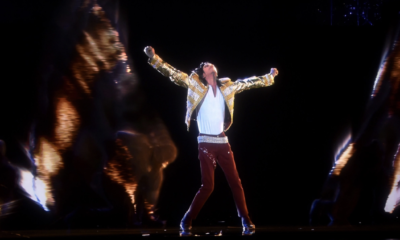

Hologram at 2014 Billboard Music Awards Performed by Michael Jackson Impersonator
-
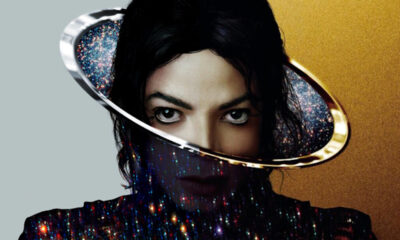

Michael Jackson’s Triumphant Chart Return, New “Love Never Felt So Good” Music Video & MORE!
-


XSCAPE: Reviewing the Reviews & Analysing the Clues Regarding the New Michael Jackson Album
-


EXCLUSIVE: DJ confirms how Michael Jackson track became duet with Justin Bieber
27 Comments
Leave a Reply
Cancel reply
Leave a Reply
Cascio Tracks
First Amendment Coalition to Support Sony and the Jackson Estate in Fake Songs Lawsuit
Published
3 years agoon
February 9, 2021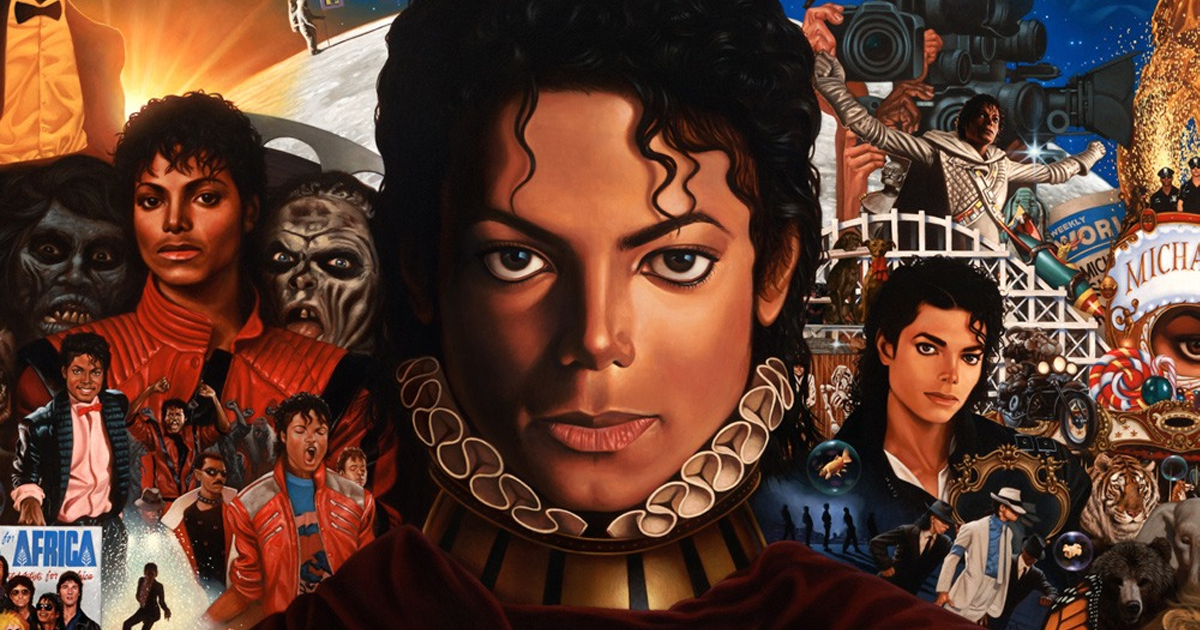
There has been yet another twist in the class action lawsuit filed by Californian consumer Vera Serova against Sony Music and the Estate of Michael Jackson regarding three allegedly fake songs commercially released on the 2010 Michael album.
In documents filed with the California Supreme Court yesterday, an organisation called The First Amendment Coalition has requested permission to file an amicus brief in support of Sony and the Estate’s purported constitutional right to sell fake songs as authentic Michael Jackson material.
FAC’s request comes after four separate amici were filed in support of plaintiff Serova by several consumer protection groups along with the California Attorney General’s Office.
All previously filed briefs support Serova’s assertion that this is a straightforward case of false advertising, and that billion-dollar corporations should not be able to commercially label fake art as authentic.
They also assert that by filing an anti-SLAPP motion against Serova, Sony and the Estate misappropriated a statute which is supposed to protect the general public against the limitless resources of wealthy corporations, and to prevent those corporations from intimidating the public into abandoning legal action against them.
Nine consumer protection organisations stated in a joint filing that Sony and the Estate have misused the anti-SLAPP statute to achieve the exact opposite of its intended purpose.
But according to documents filed yesterday, The First Amendment Coalition believes that if the Supreme Court rules in plaintiff Serova’s favour, and if a precedent is set that Sony and the Estate cannot sell fake songs as authentic Jackson material, it could have “significant implications for many different First Amendment contexts beyond the particular circumstances of this case.”
In this case, Sony asserts that they should not be held accountable for the statements made on the Michael album cover and in their television commercial, because those statements were “noncommercial” in nature. Rather, they argue, those statements are merely their contribution to the ongoing public debate about whether the vocals on three of the songs were authentic or fake, and that this makes it free speech under the First Amendment.
FAC has indicated that they will stand with Sony on this matter.
According to the mission statement published on their website, FAC is a nonprofit public interest organisation dedicated to “advancing free speech” and “public participation in civic affairs.”
By definition, public participation in civic affairs is a process in which members of society take collective action to address issues of public concern.
This begs the question: Is the definition of FAC’s mission more appropriately applied to a multi-billion dollar corporation’s purported right to claim that a commercial product is legit, when in fact it is fake? Or to a member of the public who seeks to take collective action to address the issue of that multi-billion dollar corporation falsely advertising that same product to millions of unwitting consumers?
Despite Sony and the Estate’s best efforts to stop her, the plaintiff in this case (Miss Serova) is a member of society who is attempting to take collective action (by filing a class action lawsuit) to address an issue of public concern (that a corporation may be defrauding consumers).
Moreover, FAC’s mission statement also claims to advocate for a “more open and accountable government” and “the people’s right to know”.
It should be noted that the Californian government is in fact advocating for openness and accountability and for the public’s right to know in this case – on behalf of the plaintiff, against the billion-dollar corporation that has conceded in its legal arguments to have ripped her off.
For the purposes of this proceeding, defendants Sony and the Estate have stipulated that the songs in question are indeed fake. And while their exact arguments aren’t due to be filed with the court until March 10, 2021, in the context of the defendants’ concessions, FAC could, in theory, be perceived to be advocating in favour of fraudulent representation of forged art, rather than for openness and accountability and the people’s right to know.
In a press release issued on January 29, 2021, the California Attorney General said:
“Products must deliver on their claims. If someone buys an album from a recording artist, they should expect that the songs on the album were made by that artist unless noted otherwise… We must hold companies accountable to stand by their products. Companies have a First Amendment right to communicate, but their claims must be informed and accurate.”
More to come when FAC files their amicus brief.
A podcast series called Faking Michael is in the works, detailing a decade-long investigation of this case. You can subscribe to Faking Michael on Apple Podcasts, Spotify and YouTube.
Damien Shields is the author of the book Michael Jackson: Songs & Stories From The Vault examining the King of Pop’s creative process, and the producer of the podcast The Genesis of Thriller which takes you inside the recording studio as Jackson and his team create the biggest selling album in music history.

Cascio Tracks
Californian Government Joins Fraud Lawsuit Against Sony Music and Jackson Estate
Published
3 years agoon
January 30, 2021
The California state government has officially joined a class action lawsuit against Michael Jackson’s estate and record company.
In a press release issued yesterday, the state’s Attorney General, Xavier Becerra, accuses Sony of “shirking responsibility” for making “false and misleading claims” about a posthumously released Michael Jackson album, and then declaring ignorance of their misrepresentation.
The Attorney General also filed an amicus brief with the California Supreme Court, urging them to intervene in the case of Serova vs Sony Music Entertainment, et al., for fear that “broad, destabilising consequences for well-established false advertising principles,” could be felt if it did not take action and rectify a problematic Appeals Court decision in the case.
The lawsuit at the centre of the amicus brief was filed almost 7 years ago. The suit alleges that Sony Music and the Jackson Estate misled consumers when they commercially released the Michael album, comprising 10 tracks, in December 2010.
The plaintiff in the case, Vera Serova, insists that three of the 10 tracks on Michael are part of an elaborate artistic fraud masterminded by co-defendants Eddie Cascio and James Porte, who sold the tracks to Jackson’s Estate for millions of dollars after the superstar’s death.
Serova alleges that those three tracks, known as the Cascio tracks, are fakes sung by an impostor. And she’s not alone.
Months before the album was released, members of the Jackson family warned Sony and the Estate regarding the Cascio tracks, insisting that they were fakes and should not be released. One of the Estate’s co-executors, John McClain, agreed with the Jackson family.
In response, Sony issued a press release stating that they had “complete confidence in the results of their extensive research” that the vocals were authentic. The company then released the album, including three Cascio tracks, against the family’s wishes.
Sony even went as far as to explicitly inscribe on the album cover that the vocals on all the album’s tracks were “performed by Michael Jackson.”
But despite Sony’s repeated assurances that the vocals were legit, when Jackson’s fans got their hands on the album and heard the Cascio tracks for themselves, a huge controversy ensued. Thousands upon thousands of fans around the world instantly rejected them as fakes.
Ironically, this very controversy – which Sony itself created by releasing the Cascio tracks – is one of the many points the company has since tried to raise as a get-out-of-jail-free card.
Sony says that because thousands of people were questioning the authenticity of the vocals, the company’s claim that Jackson sang them was not commercial in nature, but merely their non-commercial contribution to the ongoing authenticity debate.
But the Attorney General argues that Sony’s logic is absurd. The fact that there were questions over the vocals, the AG says, only increased Sony’s need be sure that the songs were indeed authentic if they intended on claiming they were:
“Questions about the authenticity of songs allegedly recorded by Michael Jackson shortly before his death naturally led to significant interest and debate among fans, members of the media, and the public more generally. That level of interest made it all the more important for Sony to provide accurate information about the songs to consumers.”
The AG added: “It would seriously frustrate the State’s interest in combating false or misleading advertising to immunise a seller from liability merely because its claims bear some relation to a matter of public interest or a public figure.”
Moreover, the Attorney General completely rejects Sony’s claims that their speech wasn’t commercial in nature.
Because the album cover explicitly stated that the songs were “performed by Michael Jackson,” Sony was bound to that statement as being the truth, and could be held liable under consumer protection laws if it were proven otherwise.
“A seller’s description of a product on a label or in an advertisement is a classic form of commercial speech. Thus, assuming Serova’s allegations are true, application of California’s false advertising statutes fully comports with the First Amendment.”
In the press release issued yesterday to alert the media of the California state government’s support of Serova’s lawsuit, Attorney General Becerra said:
“Products must deliver on their claims. If someone buys an album from a recording artist, they should expect that the songs on the album were made by that artist unless noted otherwise… We must hold companies accountable to stand by their products. Companies have a First Amendment right to communicate, but their claims must be informed and accurate.”
Sometime in mid-February the Los Angeles City Attorney’s Office is due to join the California Attorney General and the nine other consumer protection groups already supporting Serova’s case. No amicus brief has been filed in support of Sony or the Jackson Estate.
A date for the oral hearing of these briefs is yet to be set.
A podcast series called Faking Michael is in the works, detailing a decade-long investigation of this case. You can subscribe to Faking Michael on Apple Podcasts, Spotify and YouTube.
Damien Shields is the author of the book Michael Jackson: Songs & Stories From The Vault examining the King of Pop’s creative process, and the producer of the podcast The Genesis of Thriller which takes you inside the recording studio as Jackson and his team create the biggest selling album in music history.

Cascio Tracks
Fake Michael Jackson Songs Lawsuit Boosted by Support from Consumer Protection Groups
Published
3 years agoon
December 14, 2020
A legal quest for justice over a posthumous Michael Jackson album including 3 allegedly-fake songs has received a serendipitous boost on the 10th anniversary of the album’s release.
On Friday, December 11, 2020, the Berkeley Center for Consumer Law and Economic Justice filed an amicus curiae brief with the California Supreme Court in support of plaintiff Vera Serova’s ongoing class action consumer fraud lawsuit against Sony Music and the Estate of Michael Jackson.
The powerfully-worded brief was co-signed by 8 additional consumer protection organisations. Click here to read it in full.
Serova’s lawsuit, filed in 2014, alleges that Sony and the Estate misled her and millions of consumers when they commercially released the Michael album on December 14, 2010 – exactly ten years ago today.
The lawsuit alleges that three songs on the album are forgeries sung by an impostor vocalist, and that Sony and the Estate falsely advertised those songs to consumers as authentic Jackson material.
The three songs at the centre of the lawsuit – Breaking News, Monster and Keep Your Head Up – were originally co-written and produced by Eddie Cascio and James Porte, who are co-defendants in the fraud component of the case.
The consumer protection organisations wrote in their joint filing on Friday that Serova’s is a “straightforward case of deceptive advertising.”
Yet the case has been in legal limbo for more than four years.
Back in 2016, Sony and the Estate filed an anti-SLAPP motion against Serova, claiming that her lawsuit was a ‘strategic lawsuit against public participation’ (SLAPP) intended to deny the billion-dollar corporations their purported constitutional right to sell fake songs as authentic Jackson material.
For the purposes of their legal arguments, Sony and the Estate conceded that Jackson was not the singer of the three songs in question. To be clear, this was not an outright admission that Jackson was not singing – after 6 years in court, that issue hasn’t even been addressed yet.
Rather, their concession was made in order to prevent Serova from presenting evidence that the songs are fakes. Under normal circumstances, Serova would have been required to demonstrate that her case wasn’t a shakedown, and that she could substantiate her claims with supporting evidence.
But Sony and the Estate said that it didn’t matter if they were fake, arguing that the law allows them to lie to consumers regardless.
Their argument centres around their assertion that the statements made as part of the album’s promotional material – including on the album cover and in a TV commercial – are not commercial in nature. Yes, they’re arguing that the speech in a commercial isn’t commercial speech.
“If we ripped people off and it’s noncommercial speech, they lose under the statutes,” said Sony lawyer Zia Modabber in court. “That is just the law.”
In August 2018, the corporations succeeded in their bid to be dismissed from the case. Serova fought back, petitioning the California Supreme Court to intervene, which they did. But when the case was sent back to the Appeals Court in January 2020, Sony and the Estate were yet again dismissed.
Shockingly, the Appeals Court ruled that Sony and the Estate should be allowed to lie to consumers by selling fake songs as authentic Jackson material. And so Serova petitioned the California Supreme Court a second time, seeking a review of the Appeals Court’s bizarre ruling.
As reported here in April, the Supreme Court found that the Appeals Court’s ruling was legally problematic and granted Serova’s petition for review.
In their filing on Friday, the consumer protection organisations supporting Serova’s case took aim at Sony and the Estate’s application of the anti-SLAPP statute, writing that it “does not provide a get-out-of-jail-free card to forgers.”
Under the stipulation governing this proceeding, Sony’s promotion of Michael plainly violates California’s statutes protecting consumers from false and misleading advertising. Sony marketed Michael as “a brand new album from the greatest artist of all time,” with “9 previously unreleased vocal tracks performed by Michael Jackson.” Because, as the parties have agreed for purposes of this appeal, three of the nine songs were not sung by Michael Jackson, Sony has made advertising statements that were untrue and misleading and has therefore violated California’s basic consumer protection laws.
Amicus curiae brief, Berkeley Center for Consumer Law and Economic Justice et al., December 11, 2020.
The anti-SLAPP statute is intended to protect David from Goliath – to shield the general public against the limitless funds and resources of wealthy corporations, and to prevent those corporations from intimidating the public into abandoning legal action against them.
The consumer protection organisations state in their filing that Sony and the Estate have misused the anti-SLAPP statute to achieve the exact opposite of its intended purpose:
What the present proceeding entails is the misuse of the anti-SLAPP statute by a well-funded corporation to try to silence individual consumer claims arising from what are conceded to be, for purposes of this appeal, the corporation’s misleading commercial statements. In other words, this action embodies precisely the reverse of what the anti-SLAPP statute is intended to accomplish.
The consumer protection organisations concluded their 47-page filing with the following:
The anti-SLAPP statute must not be misused to undermine California’s consumer protection laws. When Sony promoted Michael, it engaged in misleading or deceptive advertising. Sony has no free speech right to deceive consumers. Ms. Serova’s claim for misleading advertising is not a “strategic lawsuit against public participation.” To the contrary: it is a straightforward deceptive advertising action brought to vindicate precisely the individual rights that both California’s consumer protection laws and its anti-SLAPP statute are designed to protect.
The California Attorney General’s Office has also stepped in, requesting an extension to file their own amicus brief in support of Serova.
This means that when the California Supreme Court hears Serova’s case sometime next year, she will not only have the support of at least 9 independent consumer protection organisations, but also the backing of the California state government.
UPDATE: The Los Angeles City Attorney’s office has also joined the chorus of support behind Serova’s case, formally requesting an extension to file an amicus brief on December 14, 2020.
Stay tuned for further updates on the case. This website will continue to provide information as it becomes available.
You can also subscribe to the upcoming Faking Michael podcast series about this matter. A release date has not yet been set, but subscribers will have episodes delivered to them when they do become available.
The trailer for Faking Michael is available on Apple Podcasts, Spotify and YouTube.
Damien Shields is the author of the book Michael Jackson: Songs & Stories From The Vault examining the King of Pop’s creative process, and the producer of the podcast The Genesis of Thriller which takes you inside the recording studio as Jackson and his team create the biggest selling album in music history.

Subscribe to Podcast
Articles


Producer Teddy Riley Comes Clean Regarding Fake Songs From Posthumous Michael Jackson Album
Legendary producer Teddy Riley has spoken out against the controversial Michael Jackson album he worked on after the pop star’s...


Huge Win for Michael Jackson Fan as Supreme Court Rejects Sony’s Free Speech Defense in “Fake” Songs Lawsuit
Two ‘get out of jail free’ cards, used by lawyers for Sony to avoid facing the music in a consumer...


Alleged Forgeries Removed From Michael Jackson’s Online Catalog After 12 Years of Protests and a Fraud Lawsuit
Three songs alleged to have been falsely attributed to Michael Jackson were abandoned by the pop star’s estate and record...

Supreme Court Judge Grills Sony Lawyer Over ‘Contradictory’ Arguments in Alleged Michael Jackson Fraud
A lawyer defending Sony Music and the Estate of Michael Jackson in a consumer fraud lawsuit has today argued that...

Court Date Set in Supreme Court Battle Over Legal Right to Sell Alleged Michael Jackson Forgeries
Sony Music and the Estate of Michael Jackson will again fight for their right to sell alleged forgeries as authentic...


Invincible, ‘Xscape’ and Michael Jackson’s Quest for Greatness
Below is a chapter from my book Michael Jackson: Songs & Stories From The Vault, revised for this article. The full book...
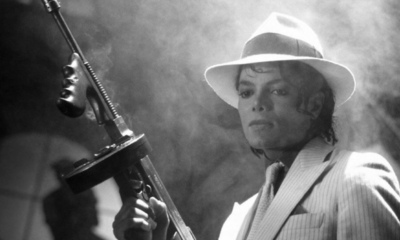

‘Blue Gangsta’ and Michael Jackson’s Fascination with America’s 20th Century Underbelly
Below is a chapter from my book Michael Jackson: Songs & Stories From The Vault, revised for this article. The full book...
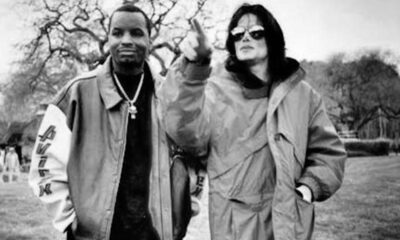

Michael Jackson Meets America in Invincible Album Outtake ‘A Place With No Name’
Below is a chapter from my book Michael Jackson: Songs & Stories From The Vault, revised for this article. The full book...

First Amendment Coalition to Support Sony and the Jackson Estate in Fake Songs Lawsuit
There has been yet another twist in the class action lawsuit filed by Californian consumer Vera Serova against Sony Music...

Californian Government Joins Fraud Lawsuit Against Sony Music and Jackson Estate
The California state government has officially joined a class action lawsuit against Michael Jackson’s estate and record company. In a...



Tristan
May 29, 2014 at 8:26 am
I don’t even know why i’m commenting. I have absolutely nothing to add. Excellent piece as always Damien.
Vini
May 31, 2014 at 1:00 am
Very good comment from the Huffington Post journalist. However, hounger audiences received the Xscape project very well. This might reinforce the idea that “reimagining” MJ should be the way to go. Sadly.
Concerned Fan
May 29, 2014 at 8:34 am
The hologram/illusion was a disaster. Great article!
Allure
May 29, 2014 at 11:11 am
Agreed!
Q. G-S
May 29, 2014 at 8:55 am
The High School Talent Show performance was brilliant. Probably a shy kid, getting up in front of everyone, and busting out some mean ass Michael Jackson moves from the most famous dance routine ever, dancing with passion and a fire inside to kick ass and winning the hell out of it. Awesome! The recent projected “Michael” performance was a great display of technology, but had no heart. It featured the body of an impersonator, not that of the king, and the head of a CG model, based on 1991 Michael, but sadly suffered the fate of many CGi humans – dead eyes and even to casual fans, not looking much like our Michael – the most photographed man on the planet. I’m so glad to see the Classic (and real) MJ in the charts of his own volition, from his own raw talent.
Diana Rose
May 29, 2014 at 9:23 am
The estate has contacted this guy, and I wouldn’t be suprised if he ends up in a video for one of the songs off xscape. Hey, maybe they’ll paste MJ’s face on this guy next time… :I
Heath
May 29, 2014 at 9:27 am
The kid has a long lean body which is needed to impersonate Michael. There are other stellar dancers who can’t pull it off as well simply because they do not have the skinny torso, long limbs, & big hands- the figure of a mine.
Heath
May 29, 2014 at 9:28 am
*mime
Diana Rose
June 1, 2014 at 8:22 am
Brett Nichols is pretty good for a kid, but theres some clumsiness in his movements and pose. sorta reminds me of the awkward clumsy movements of Chris Brown. he’s got alot of attention yeah, but not just because of how good he was, but because people didn’t like the hologram performance. it’s an either or situation and averyone is choosing or just because they don’t like either. I’m NOT trying to say I don’t appreciate this kids enthusiasm, reminds me of me in high school, but at some point i had to realize NOBODY can dance like Michael Jackson. Not me, not you, not a hologram, not an impersonator, not Brett Nichols. Michael Jackson’s own esscence as a human being is what came thorugh in his performances even when he was goofing off or not even trying we kept watching. Even if he made a mistake, or needed a microphone stand to help him stay on his toes in the later years we kept watching. It was his own unique energy, as unique as any fingerprint and will never be duplicated properly by anyone else.
Diana Rose
June 1, 2014 at 8:39 am
I say Janet Jackson is the only performer to ever come close to that energy I like about Michael. I love watching her videos and performances. I love watching her and Michael dance alongside in Scream. Even without moonwalking or doing any of Michael’s trippier moves, Janet has it, more than anyone else. and she doesn’t really have a body of a “mime” either.
Pas Mater
May 29, 2014 at 11:21 am
1. The new album is amazing. Don’t know what are you and that Charles Thompson guy are saying. This is the way they should release things in the future (new mixes for the radio and original versions for the fans). Great concept and the right way to go.
2. Fake hologram was a disaster, completely horrible BUT DO NOT LIE!!
“However, one was misleadingly labelled as being “Michael Jackson” himself.” – That is a LIE!
They never said it was Michael Jackson himself. They (the Estate) even said that there is no footage of Michael performing that song. The performance was labeled as “Michael Jackson Illusion” and “The King Of Pop Experience”, NOT Michael Jackson performance (no matter what Ludacris said). They said it was a computer generated character which it wasn’t – it was an impersonator like you said. They lied that it is completely created on computer but the fact is that they never claimed it is Michael Jackson either. The point is: computer generated character or an impersonator with CGI head = same thing = NOT MICHAEL JACKSON.
dont be messin
May 29, 2014 at 12:52 pm
before the show the official mj social media accounts all blasted the graphic “MICHAEL JACKSON as you’ve never seen HIM before” as an advertisement… robin leach also said this was a performance by michael jackson and that no impersonators were used during the creation of the illusion… then after the show sony music also referred to it by saying “still cant believe this PERFORMANCE BY MICHAEL JACKSON was a hologram” so i think there are grounds to state that it was labelled as michael jackson.
Pas Mater
May 29, 2014 at 1:48 pm
Not by Michael Jackson’s Estate. Robin Leach created much confusion by reporting false informations. I agree that the pre-show hype that they were creating was misleading but they never said it was Michael Jackson’s actual performance! Robin Leach made that up and the rest of the media picked it up. It’s wrong that they lied after the show that the impersonator wasn’t used when it is so obvious that it was but still they never said (before or after the show) that the performer was Michael Jackson. Virtual Michael, Michael Jackson Experience (it’s still 100% MJ’s song) or Michael Jackson Illusion. But not Michael Jackson.
Also I don’t think that it can be done without actor/body double. I think it is impossible to create lifelike character with full CGI body using this technology. It is the exact same technology used for Tupac “hologram” performance and they also used body double.
At 2:38 – https://www.youtube.com/watch?v=6G1XGH0aaes
But it was much easier for them because Pac didn’t move that much, had the microphone over his mouth the whole time and also they had an actual performance of him performing the song so they could base the illusion on that performance. For MJ they had nothing. They had to create new choreography, new clothes, everything.
dont be messin
May 29, 2014 at 2:00 pm
i dont mean to argue but yes by mj estate in their social media campaign they called it “MICHAEL JACKSON as you’ve never seen HIM before” here is the picture https://pbs.twimg.com/media/Bn9QOARCcAAPHg0.jpg its not like they say illusion or experience or virtual michael or anything but they say its michael….
Charles T. G Clarke
August 14, 2014 at 11:30 am
Get over urself. How he was labelled matters little. Everyone knew he was dead, leading to the logical conclusion that any ‘future’ performance by Jackson would be a body double and/or CGI. Recreating a CGI of Jackson, has to have been a piece of cake to the fine folks that brought you Avatar. The STTR performance was not a F##king hologram! It was a Pepper’s Ghost Projection. Get that straight.
JVL
May 29, 2014 at 1:54 pm
I, for one, LOVE how they did the album XSCAPE, with the new and original versions. My only gripe being that they should at least keep all of the vical arrangments as is and not cut out anything that made it to the demo recording, ESPECIALLY if they are changing the music.
As for the hologram-thing, I really enjoyed it. I liked the routine, I like that it was done for the Xscape album. My only gripe (It could have loooked a but more like MJ and moved a bit less stiff). Now, if it was ALL computer created, I would totally understand, and that would mean they did a heck of a job, but if it’s an impersonator, who’s body they captured, they didn’t pick well at all.
In the end, I really liked the performance and routine… and wardrobe, etc.
Patricia Smith
May 29, 2014 at 4:24 pm
Excellent piece as usual, Damien. The young man Brett Nichols was absolutely brilliant
I did not like, at all, the “illusion” of STTR, The moment I saw the face, that was the end for me. If that was MJ as “we have never seen him before”, quite frankly I do not want to see him again!!!
Diana Rose
May 30, 2014 at 12:58 am
hey look at this..Michael used a double to stand in for his child self and just digitally altered his child face onto the double….WE SHOULD BE OUTRAGED!!! he could have used ACTUAL FOOTAGE of HIMSELF!!!! hahahaha
I’ll Be There
http://www.youtube.com/watch?v=NpOYmeF8jWA
Diana Rose
May 30, 2014 at 1:11 am
it’s cute how you intentionally picked one of the freeze frames that really don’t look like michael to prove your point. very Dianne Diamondish of you Damien. In fact both articles you’ve written about the hologram are very one sided. Many of us liked the tribute. They may have done some things wrong, but they did alot of things right too. Besides that, I have a feeling your “sources” about them straight up using an impersonator may be biased or lying. It looks like cgi to me. As a long time MJ fan anytime someone used “unnamed sources” I get suspicious. Just a few days ago I was agreeing with most of what you said. but over the past few days I have begun to sense that you have biases against the people running things that prevents you from just enjoying things for what they are. That hologram performance was really cool. no it wasn’t perfect. but it was really cool. go watch it again. It may not be as awesome as Michael Jackson alive and in the flesh, BUT IT IS AWESOME.
Diana Rose
May 30, 2014 at 1:30 am
here’s one thing we should all ba able to appreciate…between the hologram, sucess of xscape, and Brett Nichol’s youtube video, if you Google “Michael Jackson” you don’t see any negative articles about the man himself untill you get to page 5 of results.
samhabib
May 30, 2014 at 4:46 pm
Haha… so all of those millions that the MJ Estate spent and they still got their asses kicked by a nobody, unpromoted nobody? Hahahaha 🙂 Priceless 🙂
Mike Gunn
May 30, 2014 at 7:47 pm
Think about it. Coorporate business men who care about nothing but monthly revenue sales figures trying to create magic and a fan dancing from his soul, however good or bad. Which would most people prefer.
Only God Can Decide
June 1, 2014 at 8:08 am
look at the symbolism they used in the hologram performance. It’s not good. It’s really not good.
Michaeljackson.Com
July 10, 2014 at 4:39 pm
MJ is definitely the king. Whenever i listen his tracks i feel like he is still alive. Certainly one of the best music stars ever been born!
dave telander
July 22, 2014 at 9:11 am
Hi,i think that i saw you visited my web site thus i got here to go back the want?.I
am trying to find issues to enhance my site!I assume its
adequate to use some of your ideas!!
Charles T. G Clarke
August 14, 2014 at 11:16 am
I have always admired Damiens research. Very robust and detailed, something you could never ever get elsewhere. I’m not talking about private life spectulations, but his music. This opinion piece is quite harsh in its judgement, likely because the author, like some commentators here “hate Sony”. A rather immature standpoint. Now, did Damien watch the behind the scenes of the “hologram” as he calls it? No! At least not closely enough. The VFX Supervisor clearly digitally created an image of Jackson. He even said it himself. But you would too blinded by Sony hate to even notice. I nearly boiled over with rage at the Brett Nichols performance. There is nothing interesting about that performance, it is a f#:king copy of a classic. And Damien, remember while have more views than the Slave to the Rhythm, the majority are people who have a passing in Jackson, let’s not forget the Tabloid Junkies. The video went viral for one major reason. It was promoted by Tabloid Papers. It sickened me. Brett is a great dancer, but you are comparing a digital human recreation to an average joe rehashing a classic. Very unoriginal, compared to the STTR performance. When I realised you were another one of THOSE (impersonators), my heart sank. At least you don’t brag about it. You know it is very unoriginal and you are just another can in the assembly line. Why? That alone should be reason enough to feel terrified to impersonate. Wake up!! Fan is short for fanatic and honestly, we should return to that extension. It has become a cool thing, when it really is not. Fanatic = a deluded human who obesses over an object, person, place or thing. Damien, you’re one of them! When friends of mine, consistently beg for my blackslide performance I know how they will look upon me. As a circus clown, never have and never will give in to such demands. In summary, I’m glad ur tabloid junkies (the very customers that made your precious Michael Jackson, suffer HELL!) made Brett Nichols the star and not the digitally reconstructed MJ. Not bad for a Recon, ehhhh!
Damien Shields
August 14, 2014 at 11:56 am
Of course I watched the puff-piece videos from behind the scenes of the Billboard Awards spectacle. I call them puff-pieces because they’re designed to make you think what they did was amazing while depriving you of all the facts. They only give you the info they want you to have. The truth is that the digital image you refer to the VFX Supervisor creating is based on taped footage of an impersonator – something they neglect to include in their video. That’s a fact. The great thing about facts is that they remain true whether you choose to believe them or not.